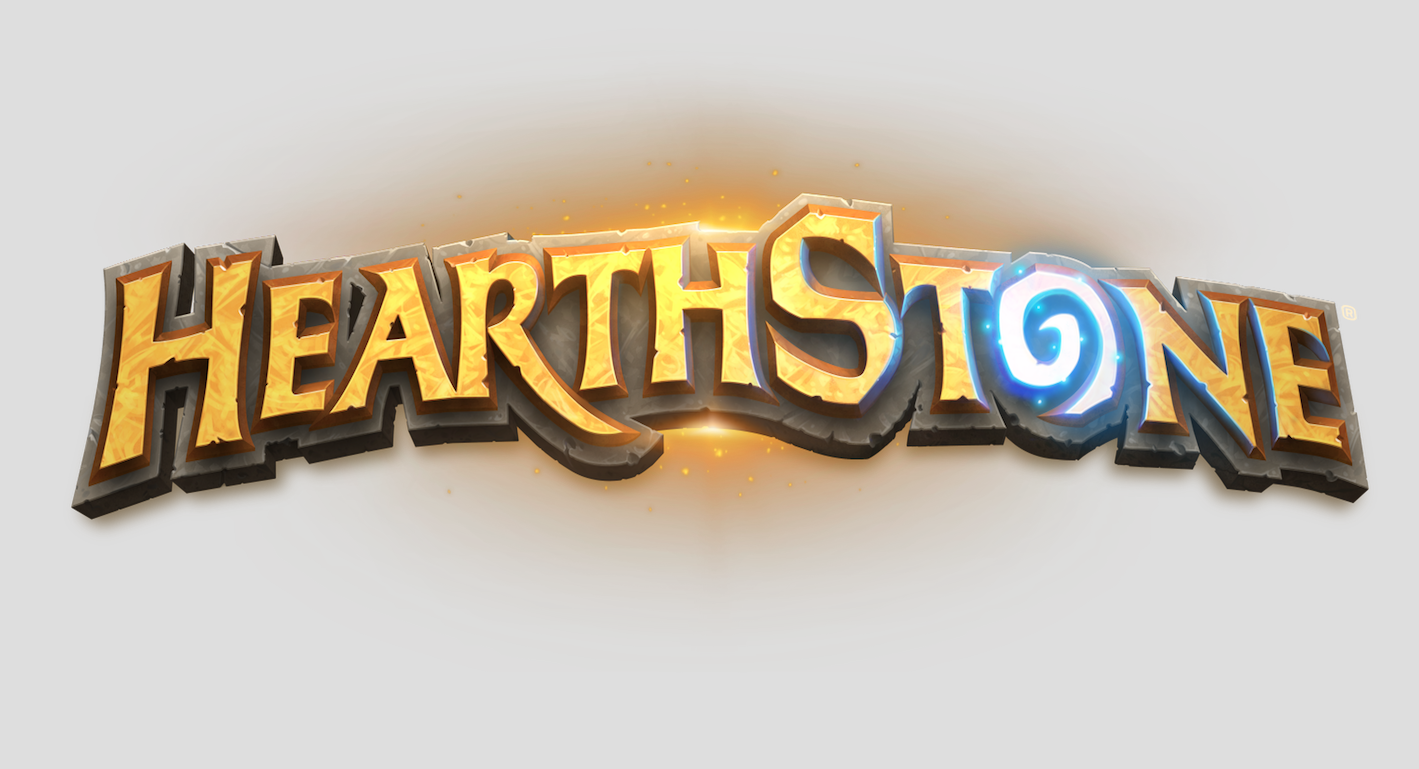
Gaming Editor James Law takes a look at the new nerfs Blizzard’s Hearthstone has introduced. Will these changes shake up the meta game as promised, or are we stuck with Hunter hardships?
Blizzard Entertainment’s flagship collectible card game Hearthstone has unleashed huge new card balance changes. They took place on the 5th of February 2019, and are set to shake up the metagame in the months leading up to the next expansion, expected in April 2019.
Five prominent cards are being changed.
Cold Blood, the Rogue class’ minion buff card, is being increased from 1 to 2 mana, doubling the requirement to play it and vastly slowing down Rogue decks’ potential to snowball their power level and secure games early on, as well as weakening their ability to finish enemies with a huge amount of damage in hand. The main deck this nerf is targeting is Odd Rogue, which relies on extremely efficient removal with the upgraded hero power that Baku the Mooneater gives them, combined with brilliant board control tools that often lead to opponents being overwhelmed before anything can be done about it. In general, Odd Rogue has dominated the ranked ladder in both Standard and Wild formats, and this change to one of their most powerful board-swinging cards will significantly weaken the deck’s overall power level.
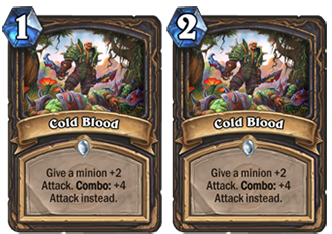
Flametongue Totem is a Basic Shaman card, and makes it into almost all of the class’ decks. Its impact is clear – it can be placed on the board and instantly turn weak minions into threats that can deal with enemies effectively. It is most commonly seen in Even Shaman decks, as the discounted 1-mana hero power means that Shaman players can easily and swiftly fill their side of the battlefield with weak token units ripe for improvement by the totem. This 1-mana cost increase completely removes the card from that specific deck, as it is no longer even-costed, and also makes it tougher to use in other situations, since before the nerf, following a 1-mana minion with Flametongue Totem represented a consistently strong early game for a lot of Shaman decks to take board control.
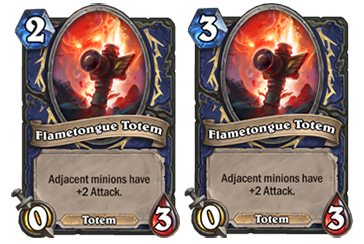
In a slightly more drastic change, Equality has been increased from 2 to 4 mana. This card has been used for a while as a way to clear the board of all minions in control-style decks, in combination with Wild Pyromancer and Consecration, both of which can fight for board control well and kill enemy momentum. In recent months, one-turn-kill, or OTK, Paladin decks have increased in popularity, particularly with the Paladin Hero card Uther of the Ebon Blade, who is able to use various synergies to destroy the enemy hero in a single turn. Equality plays a huge part in surviving to this point, particularly against aggressive decks, and doubling its cost means that Paladin decks will have to wait a lot longer into the game before they can reliably remove threats from the board. Very interesting in this case is the fact that in a recent expansion, The Boomsday Project, Paladin received a card that has a similar effect to Equality: Shrink Ray, which changes both the health and attack of all minions to 1, for just a single extra mana point. It’ll be interesting to see in the coming months whether Paladin players decide to play the altered version of Equality or whether they decide Shrink Ray is the way to go.
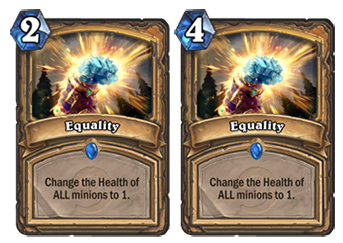
In a change that surprises some, Hunter’s Mark is being doubled in cost as well. This card used to cost 0 mana back in the early days of Hearthstone, so clearly the developers continue to see such strong single-target removal as a problem going forward. Hunter’s Mark is prevalent in the metagame at the moment because of its significant synergy with Candleshot, the Hunter weapon that makes it into almost every single deck the class has. Despite the fact that Candleshot will be rotating out of Standard format upon the next expansion, it seems that Hunter’s Mark is an issue even without this card. It will be a lot less easy to throw into decks at 2 mana, and with the general power level of Hunter as a class being so high, it’s likely that this Basic card becomes slightly less rampant in the metagame. It still represents one of Hunter’s only single-target removal cards though, so holds a significant amount of value to the class, particularly in less aggressive and more control-oriented variations.
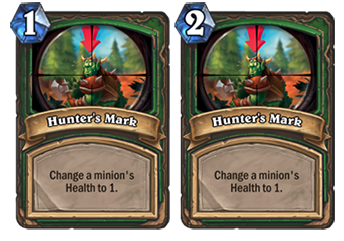
That’s not the only hit the class has taken though. Lesser Emerald Spellstone, a card that has been in the game for almost two years, is going to be increased from costing 5 to 6 mana, a move that weakens one of the strongest cards in the game. A fully upgraded spellstone on turn 5 summons 4 wolves, all with 3/3 stats. That is extremely difficult for anyone to deal with, and only a set few board clears can deal with it early on. Equality, mentioned previously, even struggles to do so, as to combine it with the 2-mana Wild Pyromancer requires a far larger mana commitment than before. Therefore, moving this mana cost up slightly is something that is unlikely to ruin the card’s viability. It is a change that Blizzard and Hearthstone players alike will hope balances out those games where Hunter decks steamroll the enemy with a rabid pack of wolves before they know what’s hit them. At least now, the card is powerful but foes have slightly more of a chance to respond. The 6-mana slot is strong in the Hunter class though – the Emerald Spellstone will now have to compete with such powerhouses as Deathstalker Rexxar, To My Side, and Savannah Highmane. Before the next expansion comes out we’ll be seeing how this change impacts the much-maligned state of ‘Hunter-stone’.
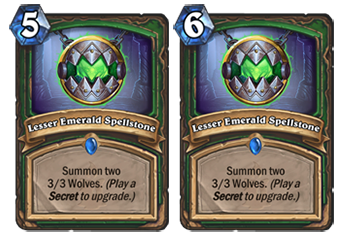
In general, these balance changes have been well-received in the sense that the wider game will be shaken up and in general just be more interesting when such ubiquitous cards are taken off of their pedestal. Blizzard claim that they do not want these cards to be ‘auto-includes’ in every deck the class has rather than being useful in certain situations.
However, there remain concerns that more casual players will be left at the wayside when it comes to nerfs to cards in the Classic and Basic sets – cards that newer and less invested players are more likely to own. Having some of the most powerful cards be accessible to most players means that it’s easier to just pick up Hearthstone and build a cheap, simple deck. The more the Classic and Basic sets are changed for the worse, the less easy it will be to get into the game. Whilst it is true that changes like this make each new expansion more impactful and increases variance between decks when new sets are released, Blizzard must be careful that a free-to-play style does not become completely unfeasible in Hearthstone, and there’s a chance that they’re going down a slippery slope when making changes that leave out a large chunk of their player base.

Comments